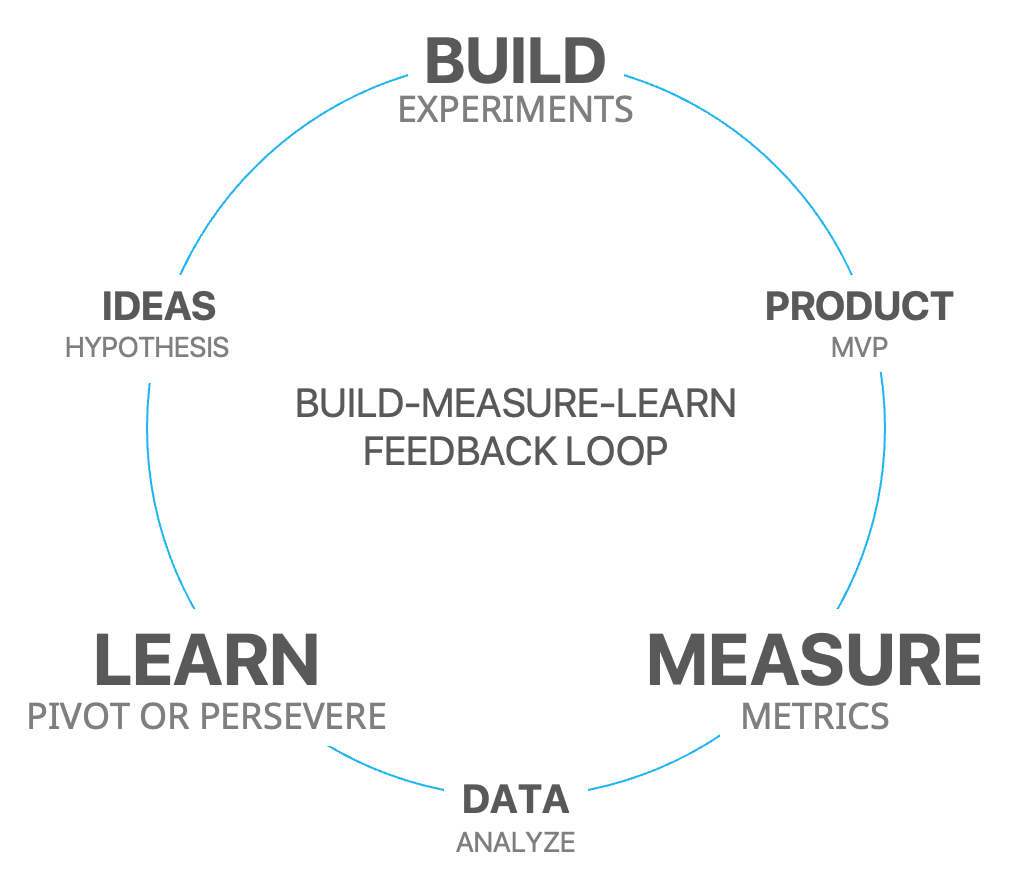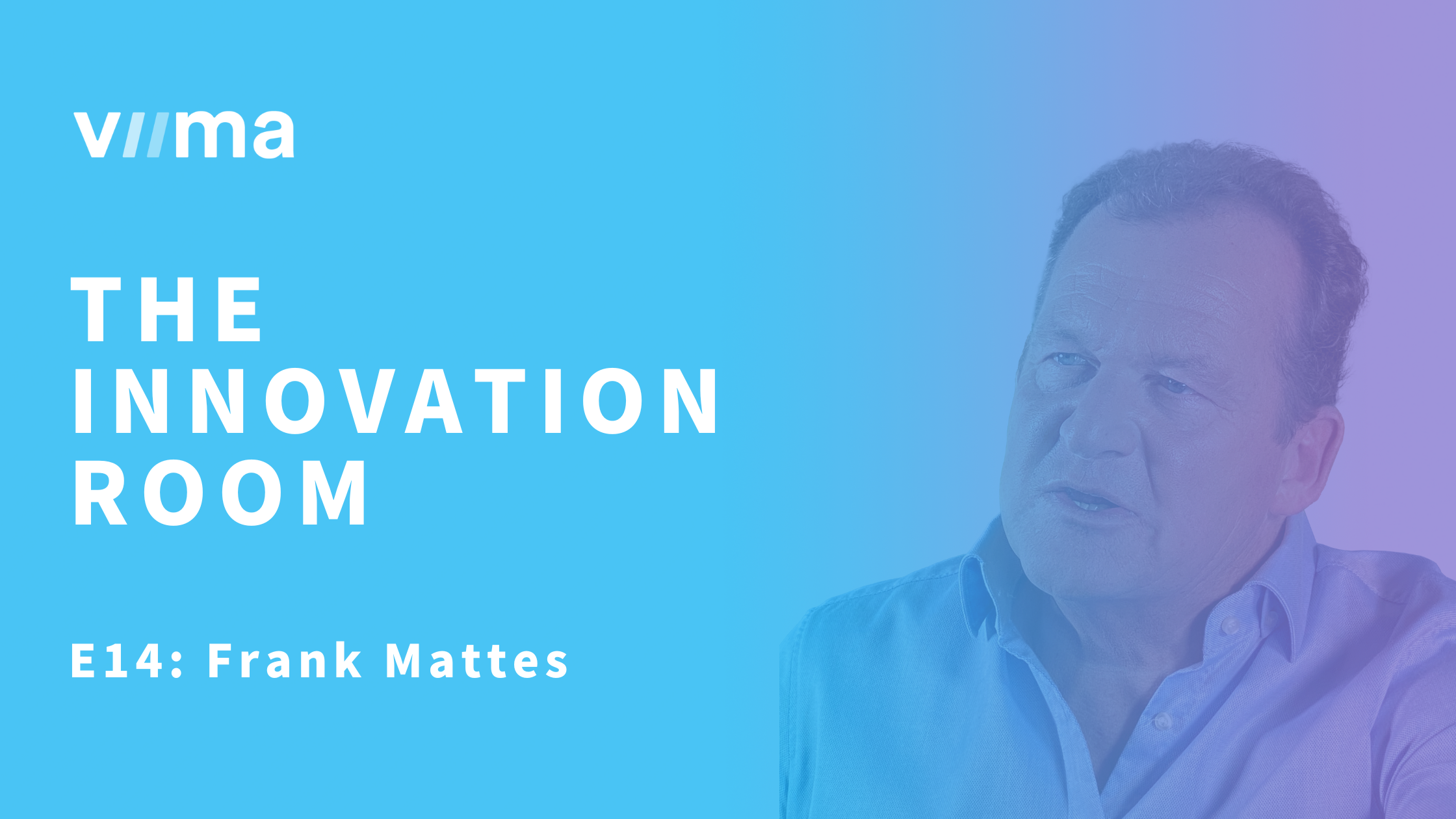What is the Lean Startup Methodology?
In the dynamic landscape of startups, a staggering 90% face the risk of failure, whether within the first year or succumbing to mounting challenges by the end of the fifth.
These statistics echoed in articles spanning the last decade, underscore the unpredictable and volatile nature of the startup journey. Faced with such uncertainty, adopting a cost-effective, waste-free approach becomes not just a choice but a vital necessity. One such approach that I will be diving into in this article is the Lean Startup method.
The traditional way of starting a new business involves a lot of planning, research, and preparation. Normally, this approach focuses on executing the plan without significant changes and assumes a stable market environment. In the end, this results in quite lengthy development cycles. This approach is not viable for all companies, especially small and emerging startups. So, let’s break the Lean Startup down, and let’s see how it can modify the traditional way of starting a new venture.

Table of contents
What is the Lean Startup Method
Zappos, Dropbox, Airbnb – these are just a few examples of well-known brands that successfully adopted the Lean Startup Method to redefine their business models. Today, the steps they undertook are so ingrained and commonly utilized that we often overlook their origins, significance, or the methodology that underpins them. Thus, as usual, let's begin with a set of definitions.
History
The Lean Startup method was kicked into motion in the early 2000s, by author and entrepreneur Steve Blank, through the introduction of his customer development methodology. Pioneering a customer-centric approach, Blank emphasized the importance of engaging your potential customers in the early phase of your startup (or new venture) development. Consumer-centric approach is a method used to found a new company or introduce a new product. It is more about giving consumers what they want and filling in the existing need, instead of creating a completely new, disruptive innovation.
While reflecting upon his past experiences of working with various startups, Blank recognized certain patterns. Namely, he realized that a lot of startups back then operated in isolation, spending immense amounts of resources on a product with the “if we build it, they will come” approach. However, time and time again, they never did. So, Blank suggested a new approach aimed at validating early business assumptions and increasing the likelihood of creating a product aligned with customer desires.
And too often, after months or even years of development, entrepreneurs learn the hard way that customers do not need or want most of the product’s features.
Steve Blank
Blank’s core belief was that each startup is founded with a flawed vision. Thus, success cannot be achieved without first identifying those flaws and fixing them sooner, not later, before the startup runs out of money.
These ideas built the foundation for a new methodology and movement – the Lean Startup.
The Lean Startup Movement
American entrepreneur, blogger, and author, Eric Ries was heavily influenced by Steve Blank’s ideas. A firm believer in agile development and lean manufacturing, he combined the core principles of these different methodologies to create a new approach to creating a startup. He had a chance to apply it to practice during his tenure as a venture advisor and while independently consulting startups. His knowledge and experience culminated in a best-selling book – the Lean Startup.
In Ries’ own words: “The Lean Startup is a new way of looking at the development of innovative new products that emphasizes fast iteration and customer insights, a huge vision, and great ambition, all at the same time”. It provides a systematic and scientific approach to creating a successful startup in an uncertain environment with a focus on resources and efficiency – core principles of lean manufacturing pioneered by Toyota.
In his book, Ries suggested the following definition for a startup: it’s a human institution designed to create something new under conditions of extreme uncertainty. And it does not matter in which industry, or which sector you are operating, as long as you are starting a new venture and if you don’t really know what you are doing – you are an entrepreneur.
Core Principles of the Lean Startup
Eric Ries, a software engineer by training, always enjoyed a scientific, calculable, and measurable approach to his work. That is reflected in his Lean Startup core principles too.
In a case of uncertainty, which is the startup environment, it is worth skipping writing a full business plan. Instead, Lean Startup suggests breaking the core points of a business plan down into a set of hypotheses. These hypotheses are called leap-of-faith assumptions – what has to be true in order for this to be a good idea?
The Lean Startup then advises taking the steps necessary to test those assumptions scientifically (however, not academically). It is a business exercise to find out whether your assumptions are true or false as soon as possible by building a minimum viable product (MVP) and presenting it to a group of potential customers for review.
It is an experiment designed to reveal whether or not those initial assumptions are true or false. If it’s true, the startup perseveres and sees the product reach the day of light. However, in the case of it being false – it is time to pivot.
If this is your first time reading about the Lean Startup, I know this might sound messy, but that’s the concept in a nutshell. Now let’s break it down.
At the very core of the Lean Startup is a Build-Measure-Learn feedback loop:

This is how Eric Ries explains the loop in his book: “Startup transforms idea into products. As customers interact with them, they generate feedback and data that is both qualitative (what they liked/disliked) and quantitative (how many people use it and value it). Products a startup builds are experiments; the learning about how to build a sustainable business is the outcome of those experiments.” The loop, of course, begins with an idea that leads into the Build phase, followed by the Measure phase, and culminates in Learn.
Validated Learning
The scientific approach to testing assumptions is called validated learning. Ries refers in his book to validated learning as “a unit of progress for a lean startup”. It is an agile process of systematically testing business assumptions, learning from the test results, and using the data to improve decision-making, increasing the chance of achieving product-market fit. This regular testing allows companies to see whether their assumptions are valid and worth investment. It allows unsuccessful ideas to fail-fast.
Fail-Fast
The Lean Startup is often called the fail-fast approach. The roots of this approach can be found in lean manufacturing where the goal is to minimize waste. Now, in this case, failing fast helps to eliminate waste by reducing the time and resources wasted on a product or service that no one wants. Not to say that every product or service will flop, of course. But with the statistics of how many startups end up failing in mind, it is in your best interest that whatever the catastrophic thing is impending – it is better to have it happen sooner and not later. This will afford you enough time to learn, recover, and pivot (on this a little later).
MVP
Minimum Viable Product (MVP), in Ries’s opinion, is the way to go. MVP is both a loved and hated concept of creating a “version of the product that enables a full turn of the Build-Measure-Learn loop with a minimum amount of effort and the least amount of development time”.
The idea of minimum is fluid and context-specific because what seems minimum to one type of a product, might be too excessive for another. To avoid offering your potential customers a bare-bones version and then being surprised that they dislike it, it is essential to carefully define the minimum standards for both your company and your product.
MVP does not mean creating the cheapest or the lowest quality version of your product. Instead, it should be developed with as low a cost as is feasible while still delivering core functionalities and effectively conveying relevant messages. This takes us to the customer validation phase.
MVP does not mean creating the cheapest or the lowest quality version of your product. Instead, it should be developed with as low a cost as is feasible while still delivering core functionalities and effectively conveying relevant messages.
Customer Validation
The Lean Startup’s goal behind the testing of features with customers is efficiency and reduced waste. While at first, this might seem contradictory – constant testing interrupts the flow and uses a lot of time, it actually is aimed at cutting the waste that comes with building a finished version of a product that the target customer does not want. So, once the MVP is ready, it gets tested with real customers.
Whether it is a lab environment, the real world, a big group, or a select few – it all depends on the product or service being developed. In the end, it will help determine that the product being developed meets the needs (or wants) of the target market, helps avoid resource-eating reworks, and helps determine the most popular or desirable features or what should be removed from the prototype.
Pivot or Persevere
It all leads back to that attempt to measure and evaluate your hypothesis “are we making sufficient progress to believe that our original strategic hypothesis is correct, or do we need to make a major change?”. Testing might positively confirm it, which means that it is worth sticking with the original plan. In the Lean Startup, that is called persevering. And the major change mentioned in the quote is called a pivot – “a structured course correction designed to test a new fundamentals hypothesis about the product, strategy, and engine of growth”.
A pivot is a change in strategy without a change in vision. Rather than sticking rigidly to the original plan, a pivot allows the startup to adapt and refine its approach based on real-world feedback and data. While pivot might mean making a sudden 180, it can also mean a simple (yet significant to the product) change in approach.
These are the core elements of the Lean Startup. In short, the Build-Measure-Learn loop is: building an MVP, running experiments and interviewing potential customers, reviewing feedback, learning from it, and then deciding whether to stay on the current track, whether to iterate or pivot. Either way, in the Lean way, this cycle is repeated throughout the whole launch period of the startup.
.jpg?width=1920&height=1280&name=hal-gatewood-o2305170alM-unsplash%20(1).jpg)
Limitations of the Lean Startup
Steve Jobs once said that quite often “people don’t know what they want until you show it to them.” There’s a lot of truth in those words. Many products and technologies so normal to us today were received with skepticism upon initial release. If every startup was to blindly follow the Lean Startup, we wouldn’t have disruptive innovations and oh boy would that create a bleak world for us to live in. So, it seems that not all that glitters is gold. Let’s look at a few main points of critique and shortcomings of the methodology.
Lack of a Plan
In his theory, Eric Ries challenges the traditional approach to business planning, suggesting that spending too much time on a detailed and intricate business plan early in the venture is counterproductive. On the one hand, it is a valid point. Is it really worth investing weeks upon weeks into preparing a plan for a product that no one wants? Instead, the Lean Startup’s proponents promote using Business Model Canvas, which can be a useful tool to provide you clarity and a holistic overview, covering essential aspects of a business and portraying a clear end goal.
However, what Canvas fails to capture is the journey toward the end goal. And no one approaches their dream, their vision with an expectation of failure. While being realistic is good, passion and faith in oneself are crucial.
Some entrepreneurs and critics of the methodology state that the Lean Startup invokes a sense of rush: filling in nine boxes with some bullet points (Canvas), creating a bare-bone product (MVP), and throwing it at people, seemingly with no plan at hand. That’s a shortcut to your startup's death.
But in reality, it isn’t the Lean Startup’s fault. Every and any methodology followed blindly will distort reality and generate unwanted results. While Eric Ries does suggest planning less, he does not completely reject the idea of a business plan. After all, it is the source of your hypotheses.
Consider using the best elements of both the Business Model Canvas and a business plan to create a more dynamic, informative, and adaptable framework, that captures both the visual simplicity of the Canvas and the depth of analysis provided by the business plan. You don’t need to jump into shipping an MVP without the next steps planned, nor do you have to spend a year planning a step-by-step roadmap to success.
Failing too Fast
Funny to write that about something that is literally called the fail-fast approach. While delivering an MVP as soon as possible to gauge the reaction of an audience is a huge selling point for the Lean Startup, taken to the extreme it can lead to abandoning great product ideas way too early in the journey.
MVP is a small part of the product you dream of selling, especially the first raw version, before any iterations. It is not perfect, it’s fragile and it is prone to fail. However, it does not make your idea bad or unworthy. The first feedback for an MVP is not an accurate representation of your final product.
The feedback might be just as much about the usability of the MVP itself, not the product. Hence, just as mentioned earlier, it is good to approach MVP building with your unique goals and desires in mind instead of making it “by the book”. Iterations are expected throughout the whole product development process. MVP and customer feedback can be a guiding light on how to improve each version of the product. In the end, MVP is used to validate assumptions, not to discredit your vision.
Only for Young Startups
The Lean Startup is ideal for startups trying to find their footing, for those who do not have experience or excessive funding, or for those who need help to perfect their vision and goals. Ideal, but not limited to.
Author and expert in corporate business building Frank Mattes stated that the way to determine whether a corporate startup (new venture in an established business) is a value-generating opportunity is “the art of validating and the art of killing in the corporate context. You have to run experiment after experiment, and you have to build these experiments into a solid validation framework. This framework should validate the customer side, product, tech, IP, corporate context, and capability.” And this is where Lean Startup’s principles come in handy.
The way to determine whether a corporate startup is a value-generating opportunity is the art of validating and the art of killing in the corporate context. You have to run experiment after experiment, and you have to build these experiments into a solid validation framework.
Competition is fierce and business as usual is not sustainable. There are plenty of examples of businesses, industry leaders (think Kodak, Blockbuster, Nokia, and so on) that failed to nurture innovative ideas and explore new possible ventures.
Adopting the Lean Startup’s agile principles, MVPs, customer focus, and continuous improvement allows enterprises to take small steps in validating business assumptions while creating enough time for needed change. While the Lean Startup itself should not be taken as a set of instructions by an established organization, elements, combined with other frameworks proves to work well.
Conclusion
The Lean Startup – what can we take away from this methodology and from my humble attempt to summarize and explain it?
As boring as it sounds, the Lean Startup journey starts the same as the traditional business building – with homework. Market research, understanding the legal and compliance issues, and sketching out a business plan. Just because the Lean Startup’s loop runs on the MVPs, it does not mean any corner-cutting, simply saving time and resources.
With a strong focus on customer validation, it is first and foremost, a customer-centric approach that probably will not lead to groundbreaking and disruptive innovation but will help create a customer needs-matching product. It helps to work rapidly, test hypotheses at the soonest possible time in the development stage, and then iterate to create an ideal version of a product, that the target audience loves.
And to be sure that your customer’s voice is heard, and their valuable ideas registered, consider using a versatile digital platform. Such tools allow you to gather and evaluate feedback, make it actionable, and keep track of your Learn phase’s processes.
N.B. Quotes in quotation marks without links to sources are taken from the book "The Lean Startup" by Eric Ries.
Interested in taking your innovation management to the next level? Viima is an agile innovation management platform that helps you elevate your Lean Startup journey.
Whether you're in the initial brainstorming stage or progressing through business assumption drafts, delivering your MVPs for customers, or analyzing feedback, Viima supports your innovation process every step of the way.
Join the 100k+ other innovators reading our blog!


.png?width=50&height=50&name=Untitled%20design%20(1).png)


.png)


